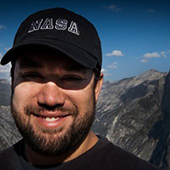Curiosity
Caring about users and their lives is absolutely at the core of user-centered design. Curiosity is a natural outcome of caring, and it is the single greatest contributor to effective user research. A user researcher needs to care about a project and get answers to the burning questions that let you achieve the necessary understanding to guide a product’s development. Curiosity guides the data-collection process—helping a researcher to see a problem from all angles and really dig into pain points and important design considerations. Caring and curiosity engender personal investment, and investment motivates a researcher to develop a deep understanding of users. When a researcher is genuinely curious about something, he engages at a deeper level, thinks of questions he would not otherwise have thought of, and puts in the extra effort to understand how a product’s intended users might be able to interact with a product.
A user researcher who isn’t invested in answering such questions to inform the design of a product will engage with users on a superficial level. The data he acquires will not result in a deep understanding of users, and he may miss important details. For example, a user might say that she’s not interested in having a certain capability in a product. A researcher who isn’t invested might take that statement at face value, but a researcher who is invested would want to know why. With some digging, an invested researcher might discover that this user is not now interested in the capability, because it wouldn’t be convenient to use in her current situation. However, when the researcher asked whether she would be interested in that capability if there were a convenient way of accessing it, she might report that she would be very interested in it. These are important details that can guide design—and an invested user researcher is more likely to uncover them by making the research questions his own.
Communication
One of the challenges of user research is that it depends on the contributions of other people. Great designers and engineers can lock themselves in a room, harness their talents, and work on a project in isolation, emerging upon its completion with a design or a build that does what it needs to do. This isn’t an option for user researchers, who must venture out into the world to obtain the essential building blocks of their work. Designers and engineers have many tools they can use to complete their work. For user researchers, our primary tools are our communication skills—and people and their experiences are our raw materials.
Improving your communication skills expands your toolset, providing you with more reliable and versatile ways of working with people. It is important to keep in mind that there are two aspects to communication: giving and receiving information. The goal of user research is to generate an understanding of the people who use our company’s products, and the best way to do that is to focus on listening and observing, tapping into the hidden meaning of what remains unsaid or assumed. Your understanding of people informs what you say to help to bring these hidden elements to the surface. A proficient user researcher notices details during a research session that others might miss.
There are various ways in which you can work on improving your communication skills. When people ask us what we recommend, we usually start with Toastmasters.![]() This might seem somewhat basic, but getting comfortable in front of people is essential to allowing yourself to relax and let your personality and natural communication skills come to the fore. In addition, we have developed some material that goes into reasonable depth about both listening
This might seem somewhat basic, but getting comfortable in front of people is essential to allowing yourself to relax and let your personality and natural communication skills come to the fore. In addition, we have developed some material that goes into reasonable depth about both listening![]() and observing.
and observing.![]() The techniques we describe can be useful in achieving an understanding of what kinds of interactions with research participants generate the best understanding of users.
The techniques we describe can be useful in achieving an understanding of what kinds of interactions with research participants generate the best understanding of users.


